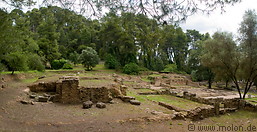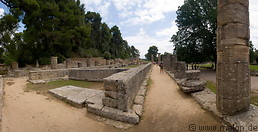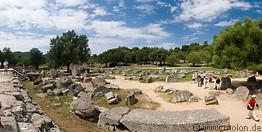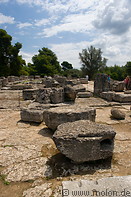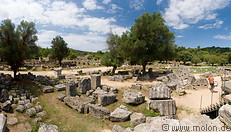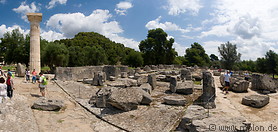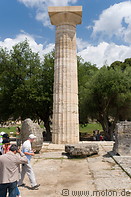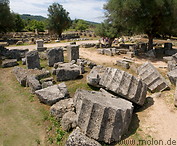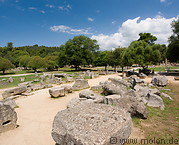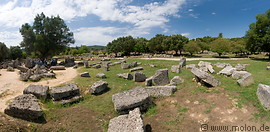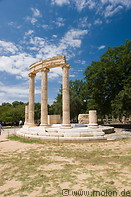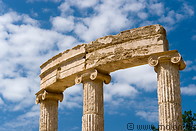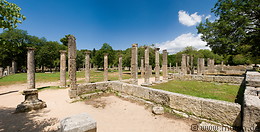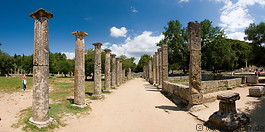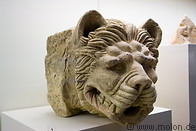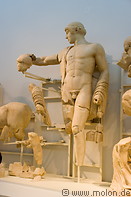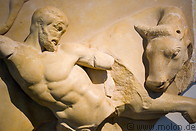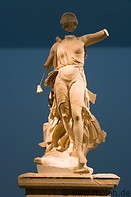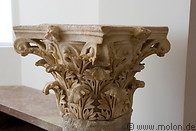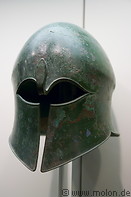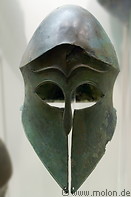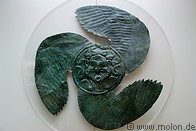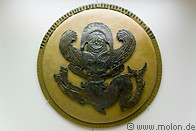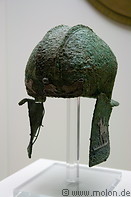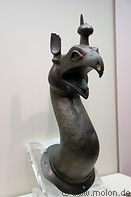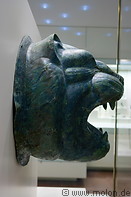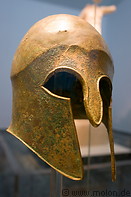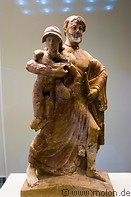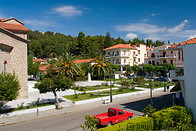Olympia, in the western Peloponnese, has been inhabited since prehistoric times and has been a centre for the worship of Zeus from the 10th century BC onwards. The region around Olympia has a high concentration of temples and masterpieces of ancient Greece (including the remains of all the sports structures erected for the ancient Olympic games).
Starting from 776 BC the Olympic games were held in Olympia every four years until they were abolished by emperor Theodosius I in 394 AD because they were reminiscent of paganism. The exact site was re-discovered in 1766 by Richard Chandler. Excavations started in the 19th century. Nowadays Olympia is a popular tourist destination. Near the archaeological site and the Olympia museum lies the modern city of Olympia, which has a good tourist infrastructure and is convenient as a basis for exploring the archeological site. The archaeological site of Olympia is a UNESCO World Heritage site.
Starting from 776 BC the Olympic games were held in Olympia every four years until they were abolished by emperor Theodosius I in 394 AD because they were reminiscent of paganism. The exact site was re-discovered in 1766 by Richard Chandler. Excavations started in the 19th century. Nowadays Olympia is a popular tourist destination. Near the archaeological site and the Olympia museum lies the modern city of Olympia, which has a good tourist infrastructure and is convenient as a basis for exploring the archeological site. The archaeological site of Olympia is a UNESCO World Heritage site.

